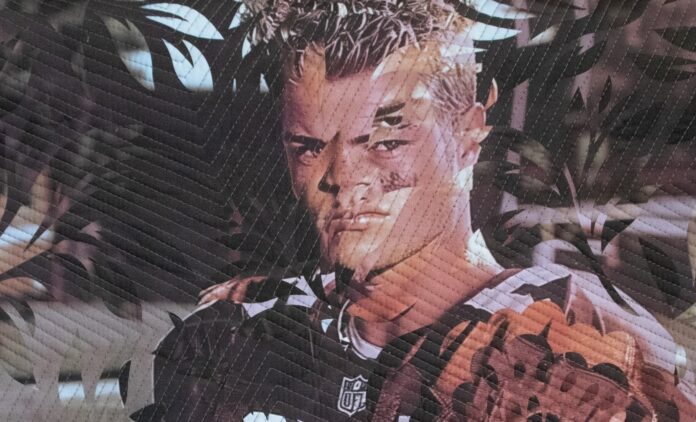You think you know quilting? Contemporary textiles artist Greg Climer is bringing male archetypes to a medium often reserved for traditional geometrical craftwork.
While quilting in itself has long been a container for historical, social, and cultural information, Climer is on a short but respected list of artists who are pushing the envelope within the art form. Combining fabrics with printed images, deconstructing and reassembling them into pixelated images (and even an animated film), Climer is dissecting the multitude of potentiality of quilts.
Climer received his BFA from Rollins College and an MFA from Parsons School of Design. Originally from Florida, he spent nearly 20 years in New York City before moving to the Bay Area in 2019, when he was offered a job at California College of the Arts. Residing in the Castro ever since, Climer says he feels so lucky to be a resident of San Francisco.
“The community here is welcoming. The immediate reaction from artists and the art community was to invite me to join in and participate, with a curiosity in knowing me. There is a mindset that if we support each other, we all thrive,” Climer told 48hills.
Infusing elements of queerness, intimacy, and worksmanship in his work, Climer finds ways to overlap content and context, experience and expression, and established technique with curious innovation.
“Growing up gay in the South had a profound influence on my work,” Climer said. “Being gay isn’t just about who I love, it’s also about where, or whether, I belong. The Southern phrase ‘love the sinner, not the sin’ always struck me as both an insult and an erasure. That so-called ‘sin’ shaped who I am—not only because it marked me as unwanted before I even knew myself, but because it suggested that my understanding of love was somehow flawed. Imagine being told you’re too broken to even comprehend love.”

Climer said that this kind of messaging fueled his commitment to making work that is unapologetically gay and queer. He identifies with the work of Chuck Close, whose work, he says, draws from similar wells.
“James Bidgood has also been a major influence. His work was marginalized under anti-pornography laws that labeled it smut, yet his use of color and intimacy continues to resonate deeply with me,” he said.
He points to other inspirations that he says may seem less direct. He includes Theo Jansen as an artist who creates life through craft as an influence.
“His dedication to refining an artistic language through making is something I look up to,” he said.
And then there is celebrated quilter Faith Ringgold, who inspired Climer early on to work with textiles as his primary medium.
“I remember hearing her talk about working in textiles because she couldn’t afford to taxi canvases to galleries. She turned to quilts, something she could roll up and carry. Of course, we know quilts can be art, but hearing that cracked something open in me. I had been sewing and making quilts but didn’t yet see them as art. She gave me permission. Decades later, I was lucky enough to tell her that,” Climer said.
With a career rooted in textiles, Climer began as a costume designer and pattern cutter, eventually moving into fashion design. Working with fabric has been central to his creative life for decades.
“My quilts originally drew from gay pornography, intentionally placing explicitly queer imagery into ‘decorative objects’ or ‘feminine crafts.’ I found this both humorous and subversive. But over time, I became more drawn to the tenderness and intimacy within those images. I continued working with male nudes, but shifted the tone. My compositions still carry forward the tradition of the male gaze—not in its exploitative form, but in the lineage of male artists portraying male beauty, from Bernini to James Bidgood. There’s a quiet devotion in that history that I’m tapping into,” Climer said.
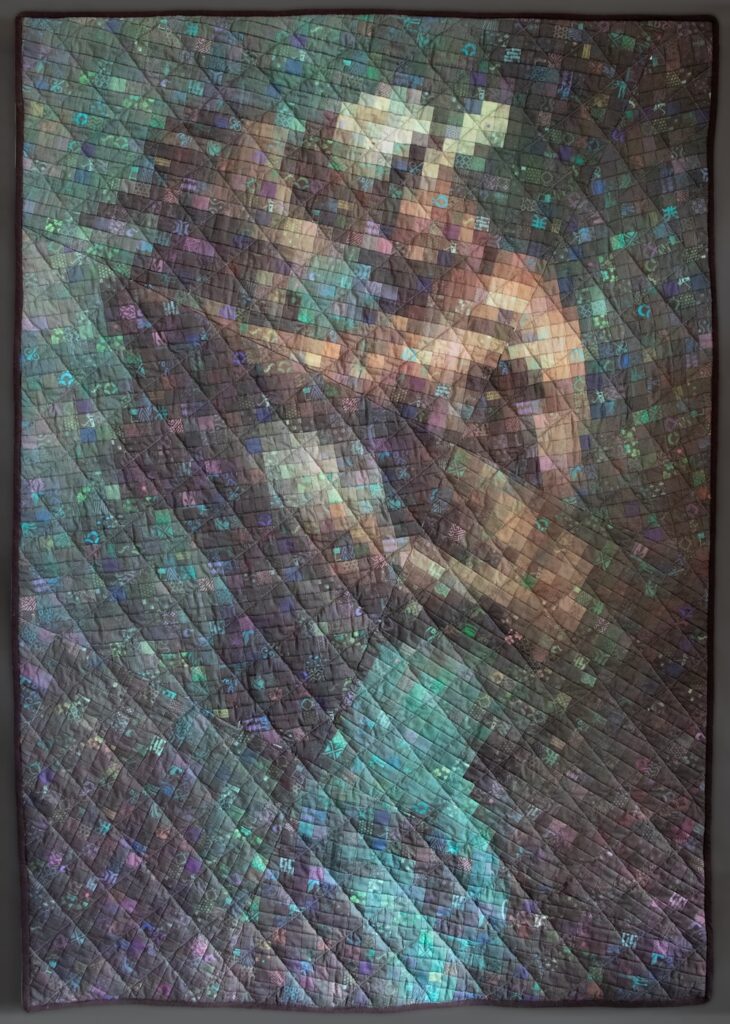
More recently, he has been exploring masculinity beyond stereotypes, through a wider lens of male archetypes both expected and unexpected. Climer says this new body of work draws on teenage crushes and queer-coded tropes.
“The football player quilts reference those high school obsessions; the portrait of a man dancing at a rave comes from the same space of adolescent longing. The barbershop piece taps into traditionally male environments that are quietly intimate; spaces centered on grooming, beauty, and touch between strangers,” he said.
His upcoming show focuses on portraits set in spaces where masculinity and vulnerability overlap, a common thread in his work.
“I’m moving from early pieces of two men entwined like a Bernini sculpture of Hercules to more subtle references like a photoshoot from XY Magazine. At the core, these portraits are meditations on desire, identity, and the ways masculinity can hold tenderness,” Climer said.
Regarding methodology, the artist says he has always worked with found or appropriated images, collaging from visual ephemera and pop culture to build the compositions he envisions as a final piece.
“That process creates a feedback loop. While searching for one image, I’ll stumble across something else that opens up a new idea or direction. It’s part excavation, part storytelling,” he said.
When he gets down to work, Climer’s process is already carefully planned. For his pixelated quilts, everything begins on the computer—the design, the color mapping, the layout—well before his hands ever touch fabric.
“I manufacture all my own textiles, so each piece requires a lot of coordination, digital prep, and time online before the sewing even begins,” he said.
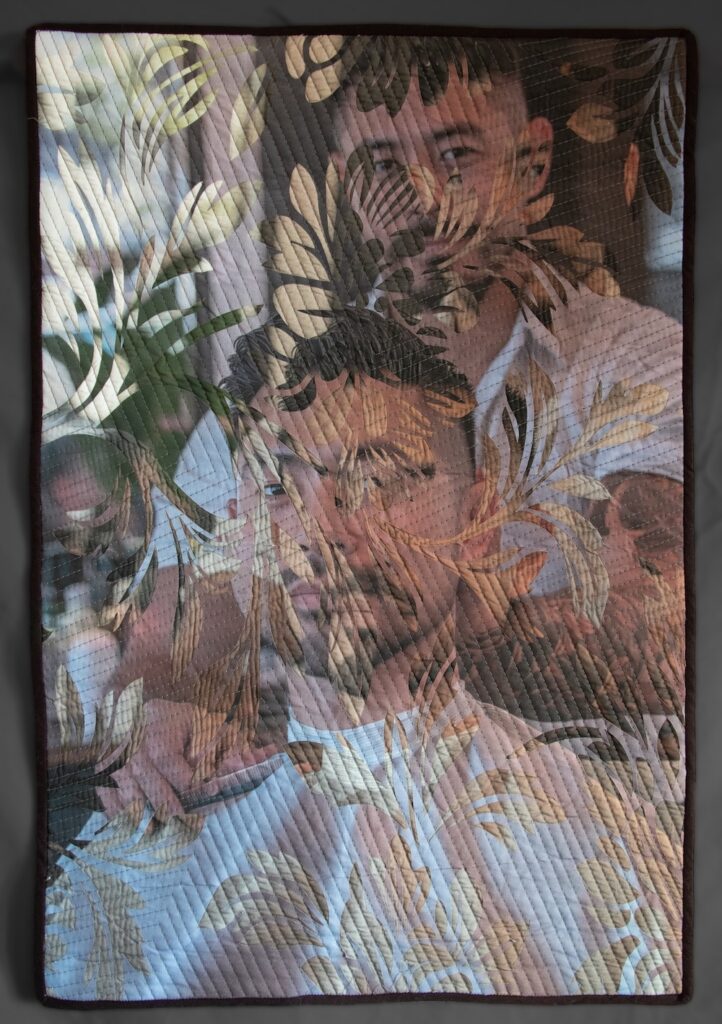
Once everything is ready, the work shifts to a more traditional quilting process of cutting, piecing, and stitching, all done by hand on a vintage Singer sewing machine. Climer says that at this stage, the work is meditative, slow, and physical.
“I don’t have a formal studio, I work out of my apartment in San Francisco, because, well . . . SF real estate. It’s not glamorous, but it’s personal. My tools and fabric share space with my life, which makes the work feel even more intimate,” Climer said.
A major turning point in Climer’s practice was a stint as artist-in-fesidence at the San Jose Museum of Quilts & Textiles, right after the pandemic lockdown ended. The opportunity provided dedicated time, space, and support to experiment. This is when he began developing the collaged quilt technique that now defines much of his current work.
“The pandemic feels distant now, but it was a pivotal period for me creatively. I didn’t mind the isolation, in fact, it gave me uninterrupted time to focus. I sat and sewed for hours. That rhythm, that quiet, allowed a lot of work to take shape. It marked a real shift, not just in style but in process, unlocking new challenges and insights,” he said.
Early on in this phase, Climer started by working with simple lines and grids, but it quickly evolved into cutting elaborate floral patterns into the fabric.
“Apparently, I’m incapable of keeping it simple. I’m drawn to intricate, technically demanding processes and that complexity often becomes part of the narrative of the work itself,” Climer said.
As his techniques have progressed forward, so has his subject matter. He says that collaging photographs printed on textiles offers a different kind of clarity compared to working in computer-generated pixels and invites more nuance, more texture, and greater detail.
“This shift pushed me to rethink what an image can be, not just in how it looks, but in how it functions. Take, for example, the quilt of the football player with floral cutouts: it’s actually composed from two different photographs of two different athletes. They happen to be in similar poses, both wearing red. But when collaged together, they form what appears to be a single image. It’s a transformation, but also a quiet disruption of our assumptions. It asks the viewer to look again, to notice what’s not immediately visible,” Climer said.
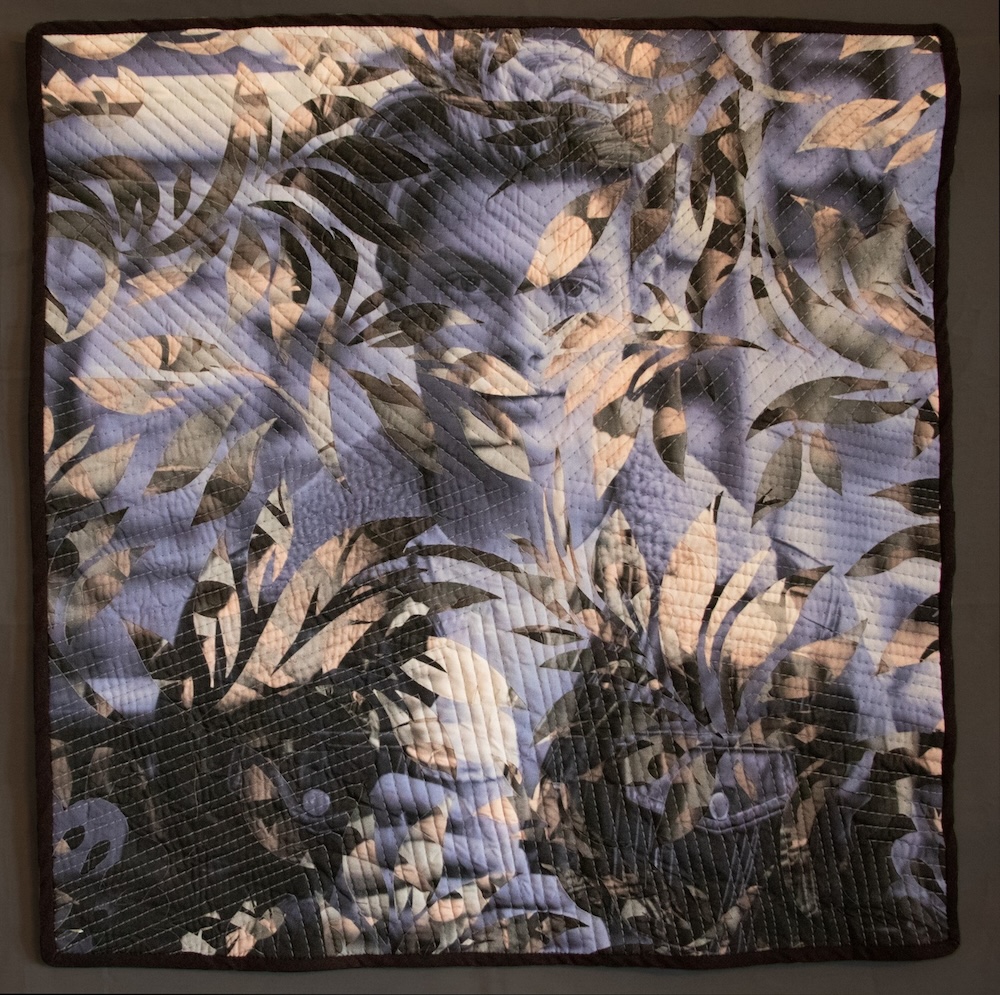
Climer says that change and interrupted flow have contributed to his creative arc. When he relocated from New York to San Francisco, for example, he left behind an enormous studio with high ceilings and ample wall space.
“My work responded to that environment, I was scaling up, making larger and more ambitious pieces. In San Francisco, I no longer have that kind of space. Working out of a smaller apartment has naturally shifted the scale of my work. It’s become more intimate again, not just in size but in tone,” Climer said.
The general shift in the country and world at large has also had a direct effect on his work.
“The past few months have been a time of profound disruption—globally, politically, personally. I don’t fully have the language for it yet. I’m carrying a deep grief, a sadness, and a fear for the future that at times feels paralyzing. Even if we outlast this administration, it’s clear the system itself is collapsing. That weight is always present. In the face of that, I believe more than ever in the necessity of art and beauty—not as a distraction, but as an expression of our collective soul. It’s how we hold each other. It’s how we remember who we are,” Climer said.
In the work for an upcoming solo show, Crushes at MAG Galleries, Climer continues his exploration of alternative tropes of masculinity—he’s scouring through vintage yearbooks and old copies of XY Magazine. The show opens on September 5 and runs through September 28.
“There is something about high school and young adulthood where guys are cosplaying at being a man that I find intriguing,” he said.
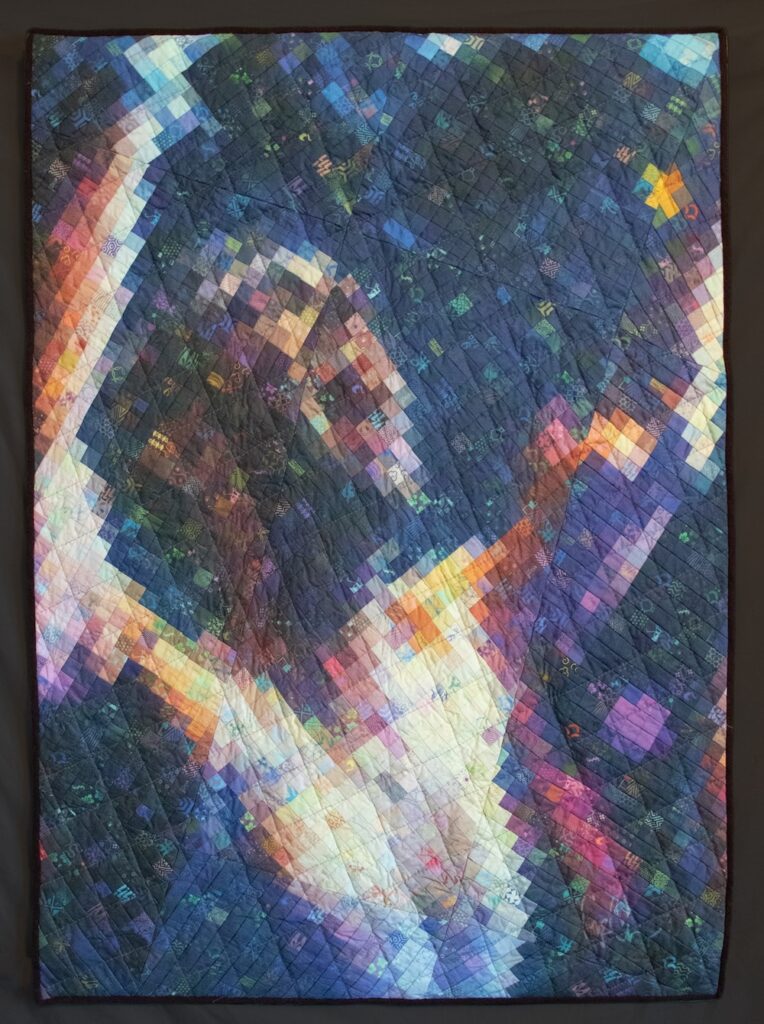
Climer is currently included in the group show Likeness, curated by Erika Diamond, at Chautauqua Visual Arts Gallo Gallery of the Strohl Art Center in Chatauqua, New York. The show closes August 20.
Recent exhibitions include participation in Homebody at Gallery 16 in San Francisco in January and Homo Faber 2024: The Journey of Life in Venice, Italy last September.
Through inquisitive and narrative textiles, artist Greg Climer hopes that people experience joy and wonder when viewing his work, and the knowledge that someone cares about them. He also strongly encourages support of the arts and working artists, in any way possible.
“There is nothing more exciting than knowing someone likes what you create enough that they want to own it and display it!” he said. “My own walls are filled with art and every piece has a story about who made it, how I ended up with it, and what it means to me. It doesn’t need to be expensive, nor something which will gain value over decades. Its value is in its beauty and the joy it brings you.”
For more information, visit his website gregclimer.com and on Instagram. View Climer speaking about his work and influences in a lecture recorded on YouTube.


